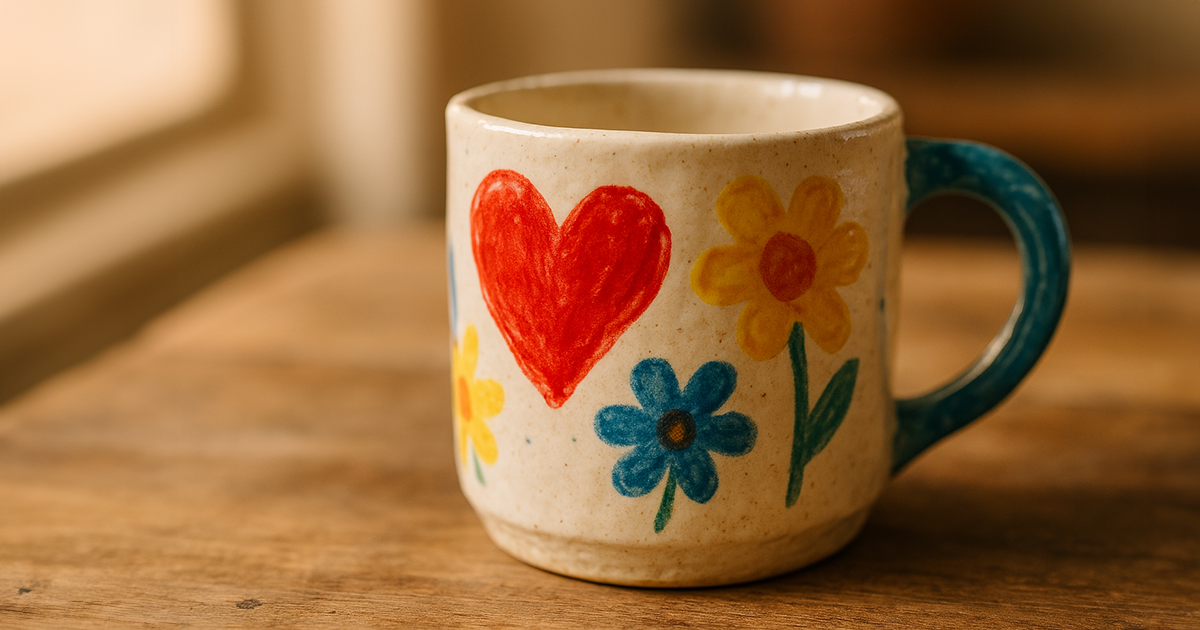Personalizing Stewardship—Even with a Small Team
Jenny Love
Published: 04/14/2025

Catherine became a donor after her life was saved at her local hospital. But the life-saving care wasn’t the reason she made her major gift.
As she shared in a donor insight panel, it was what happened after her procedure that stuck with her. Her granddaughter brought a hand-painted coffee cup to her hospital room with flowers. A nurse noticed, transferred the flowers into a vase—her
own anniversary gift—and returned the rinsed mug to Catherine. From that moment on, staff brought every drink in her granddaughter’s cup. “They treated me like family,” Catherine said. “That made me want to pay it forward.”
After hearing her story, the foundation team worked with a local artisan to create a custom-made recreation of the mug, which they invited Catherine to present to the nursing staff who cared for her, with her family by her side.
It wasn’t a brochure or a gala invitation that built loyalty. It was an unexpected, deeply personal gesture.
Stewardship Isn't Just About Saying Thank You
In the AHP Marketing and Communications Masterclass,
presenter Mike Beall, principal consultant and communications practice leader at Accordant, encourages participants to reframe the idea of donor communication to be far beyond thank-you notes and tax letters. Instead, he frames it as “glue,
not bait.”
“If we think about philanthropy communications as glue—not bait—we begin to think about how we would talk to our friends,” Mike says. “What we say becomes totally different than if we were trying to sell something.”
This framing is particularly powerful for small teams who may not have a content calendar, design support, or a tech stack to automate everything. Personalized stewardship doesn’t require volume—it requires intention.
What Donors Really Want
Mike shared that across dozens of donor insight panels, two things consistently rise to the top of what donors value in communications: personalization and storytelling. But personalization doesn’t always mean a handwritten note.
“Handwritten notes are great, but it’s really helpful to take the time to think of more creative ways to personalize,” Mike explains. “Donors want an experience that feels like it was created just for them.”
This is where the concept of planned randomness comes in.
Planned Randomness: A Small Shop Superpower
Planned randomness is the art of surprising your donors with thoughtfulness when they least expect it—like confetti in a thank-you note, but with more heart and less vacuuming.
“Planned randomness is about giving without expectation,” Mike says. “It’s doing something unexpected, at an unexpected time, with no strings attached.”
He gives an example from the book Giftology: sending someone socks on their birthday can feel obligatory. But sending
the same socks in the middle of a cold Michigan October with a note that says, “I thought of you when I saw these,” creates warmth and surprise. That’s planned randomness.
Small shops can leverage this idea in simple but meaningful ways:
- Send a card celebrating a donor’s gift at an unexpected time during the year—not a major milestone.
- Drop off a favorite treat before a donor's vacation (if you know they love Reese’s and they're headed to the lake? That’s your cue).
- Create “touchpoint tokens”—small items with emotional or narrative significance, used to strengthen the “glue” between donor and organization—like a hospital-branded bookmark with an impact story about an initiative
a donor previously supported.
What if you don’t have a legion of staff ready to run to CVS for a bag of candy every time a potential donor hits the beach? Volunteers can be invaluable here. “We’ve found that volunteers absolutely love this work,” Mike says.
“It doesn’t require confidential information—just intention and care.”
Build a Strategy Around Personalization
You don’t need to reach every donor with a custom experience. Start with your top 10. Or your top five. A great time to experiment with this type of personalization is when your organization is in campaign.
“This is the one time we’re usually extended more resources," Mike points out. "So the question is—how are we going to be better at communications at the end of the campaign than we were at the beginning?”
Creating a few standout experiences can have ripple effects. Donors talk about it. They tell their families. They feel seen.
And if you’re wondering whether it’s worth the time: “People give more money to the organization that stands out to them,” Mike says.
Just like Catherine, they don’t remember the form letter—they remember the moment that made them feel like family.
Start Small. Mean Big.
In a small shop, you may not be able to scale the level of customization of Catherine’s coffee mug to hundreds of donors. But you can choose to do something deeply personal for the few who have stood with you the longest—or who are
just beginning their story with you.
And if you're ready to build a communications strategy that supports that kind of stewardship—without burning out your staff—join us for the full Marketing and Communications Masterclass. You'll walk away with tools, templates, and a fresh perspective on what’s possible.